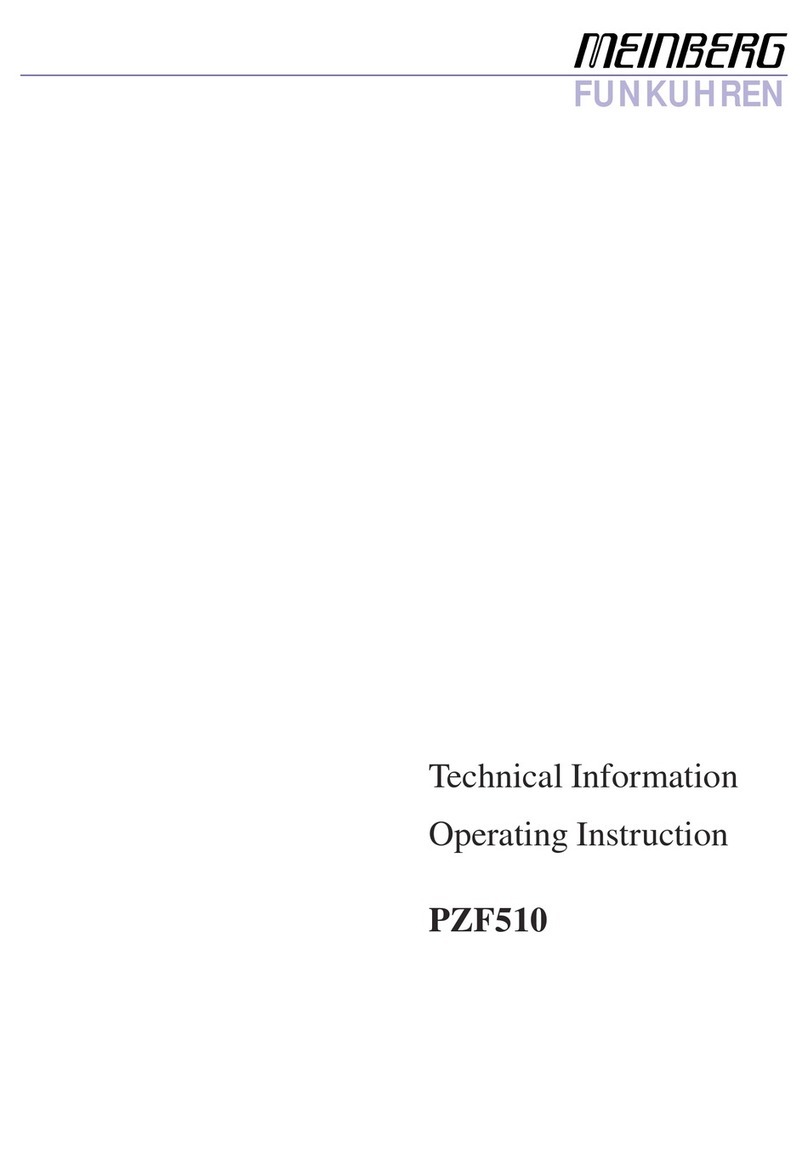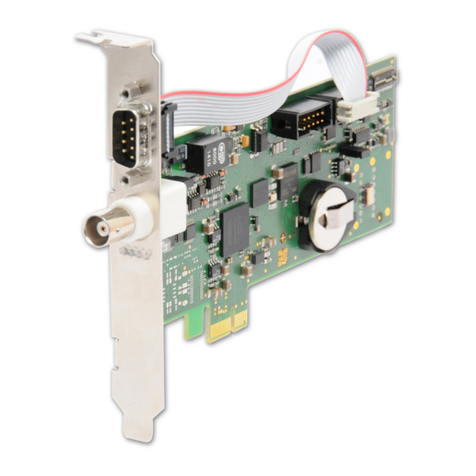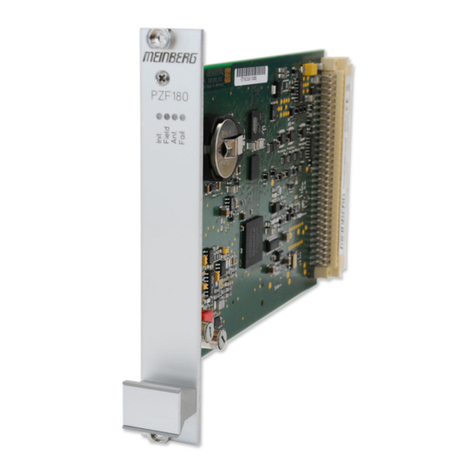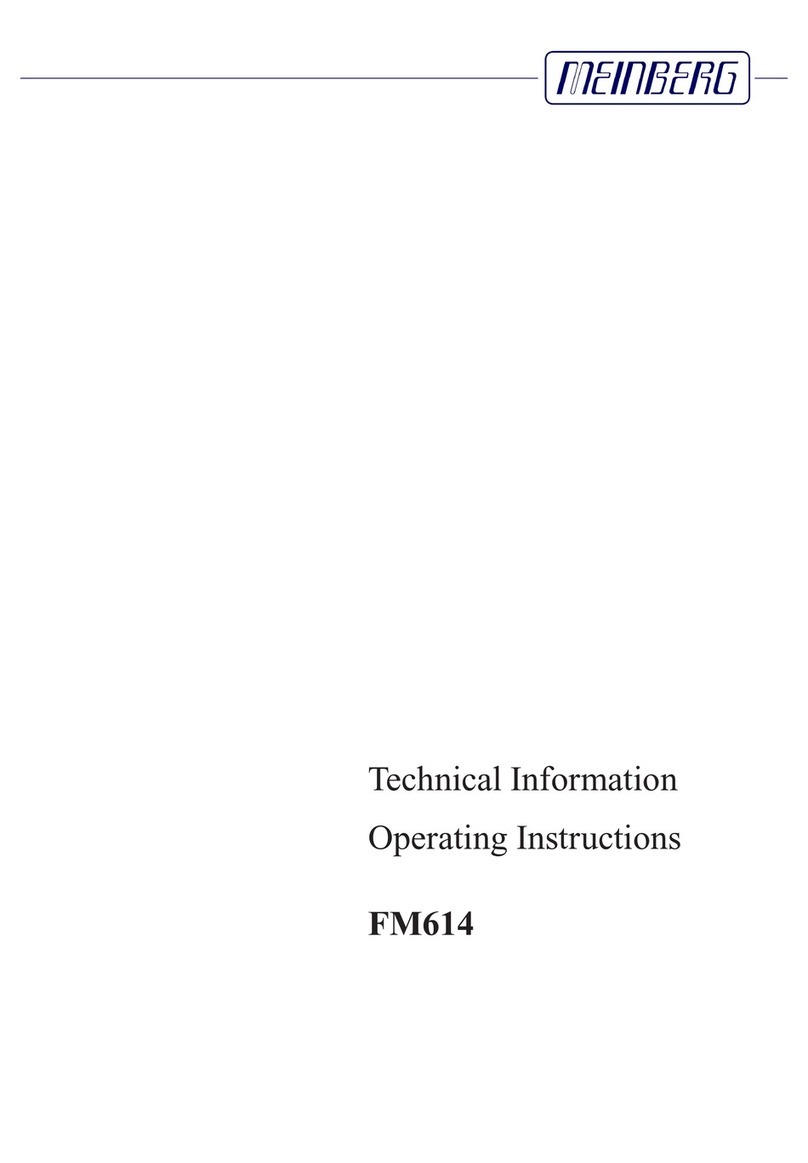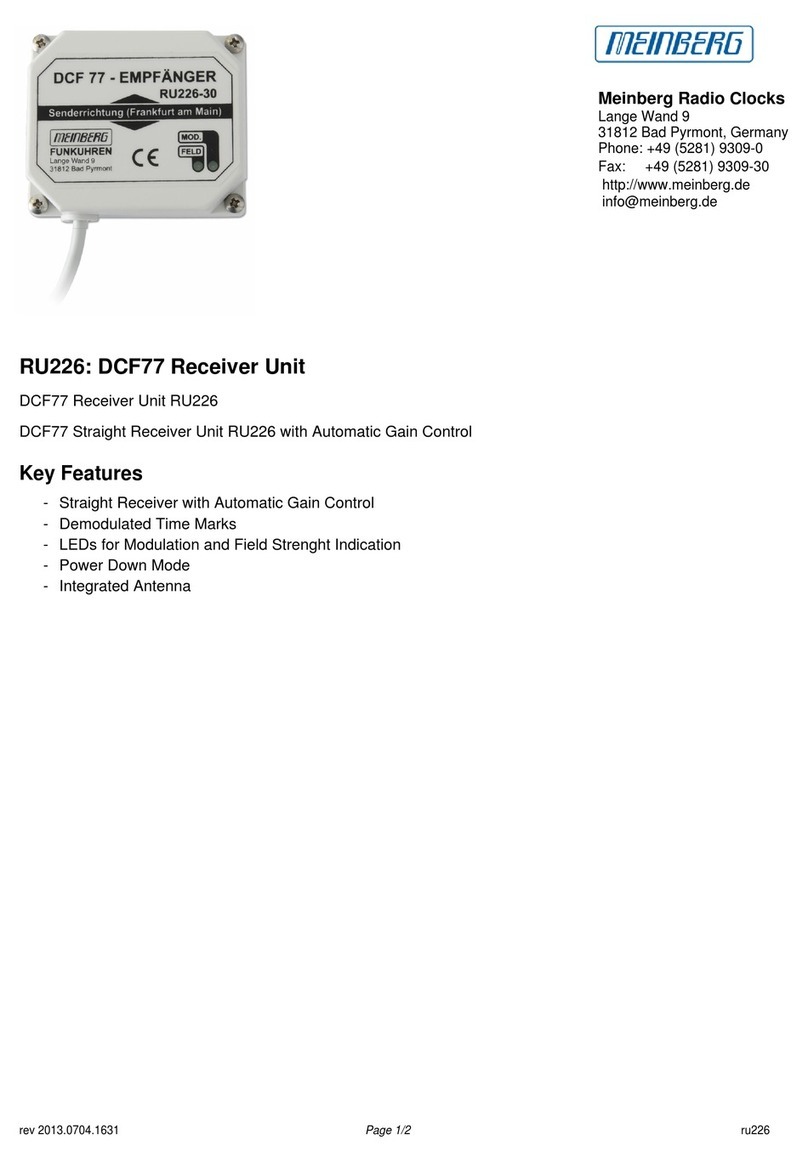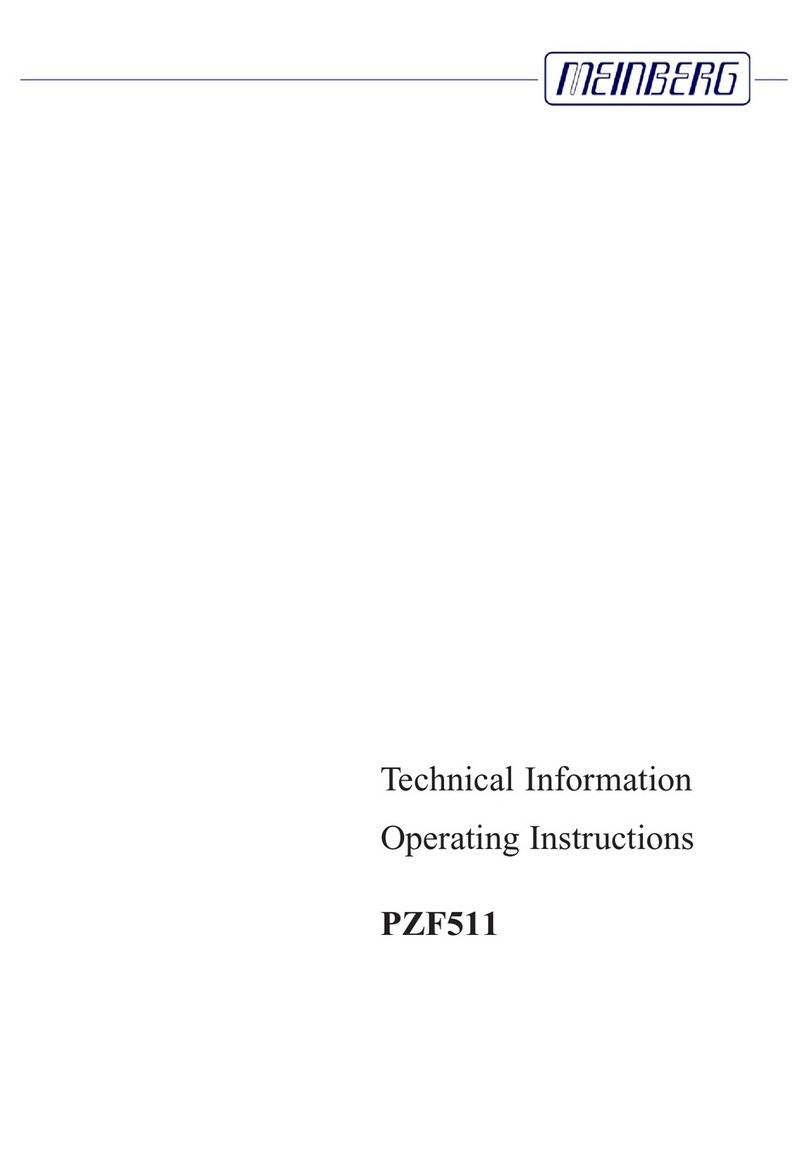
Table of Contents
1 Imprint 1
2 Important Safety Information 2
2.1 Important Safety Instructions and Protective Measures ......................... 2
2.2 Used Symbols ................................................. 3
2.3 Cleaning and Care .............................................. 5
2.4 Return of Electrical and Electronic Equipment .............................. 6
3 Introduction 7
4 General information about time code 8
4.1 Description of IRIG-Codes ......................................... 8
4.2 IRIG Standard Format ............................................ 9
4.3 AFNOR Standard Format .......................................... 10
5 Technical Function TCR180USB-EL 11
5.1 Functional Description ............................................ 12
5.2 Internal RTC .................................................. 14
5.3 Input signals .................................................. 14
5.4 Input Impedance ............................................... 14
5.5 Optocoupler Input .............................................. 14
6 TCR180 USB Connectors 15
6.1 USB 2.0 high speed Interface ........................................ 15
6.2 TCR180USB-EL Status LEDs ....................................... 15
6.3 Time Code DCLS (unmodulated) Input .................................. 16
6.4 Time Code AM (modulated) Input ..................................... 16
7 Before you start 17
7.1 Scope of delivery ............................................... 17
7.2 Disposal of Packaging Materials ...................................... 18
7.3 Download MBGMON ............................................ 18
8 System Installation 19
8.1 Connecting the System ........................................... 19
9 Put the TCR180USB-EL into operation 20
9.1 Configuration of TCR180USB-EL ..................................... 21
9.2 Set TCR180USB-EL as reference ..................................... 23
10 Technical Specifications TCR180USB-EL 25
11 RoHS and WEEE 26
12 Declaration of Conformity 27
Date: 15th October 2020 TCR180USB-EL Setup Guide

